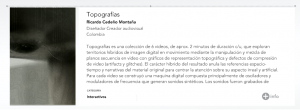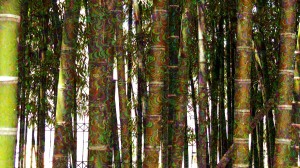02
08/11
15:48
Digital Media Morality
‘Become mediocre’ is the only morality that makes sense. [qtd. 1, p.22]
Now:
Become spectacular is the only morality that makes sense
Become consumed is the only morality that makes sense
Become pictured is the only morality that makes sense
Become green is the only morality that makes sense
Become transparent is the only morality that makes sense
How could then be described the morality of our days?
It is said that a healthy and progressive modern society is that one with a large middle class to produce consumption. The middle class is a vast collection of people whose social relations are mediated by consumption. These mediations are materialized in different kind of objects like images, products, and trends. Today we have a mediation of second order. The digital media have first co-opted all other channels to be informed of new trends; second they have challenged the products as mediators of social status; finally in the digital media are produced all the images of the spectacle we live in. The morality of today is shaped in the digital media. But still, how could it be described?
- Berman, Marshall. All that is solid melts into air: the experience of modernity. London, UK: Verso. 1983.


